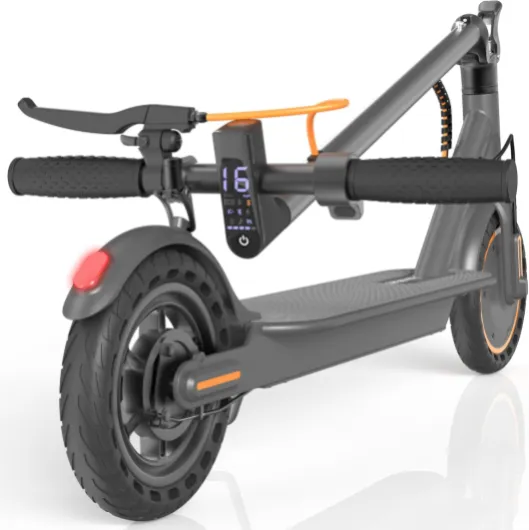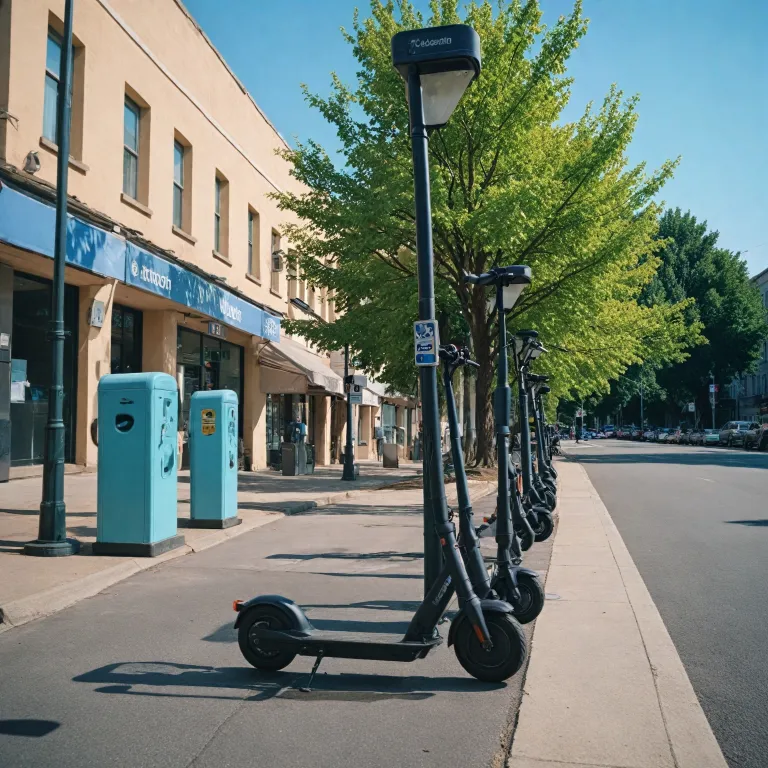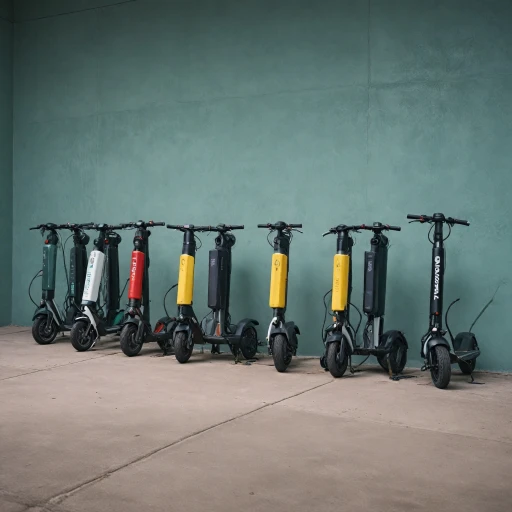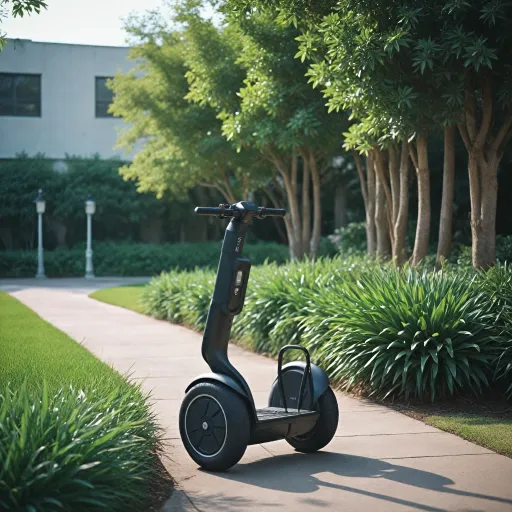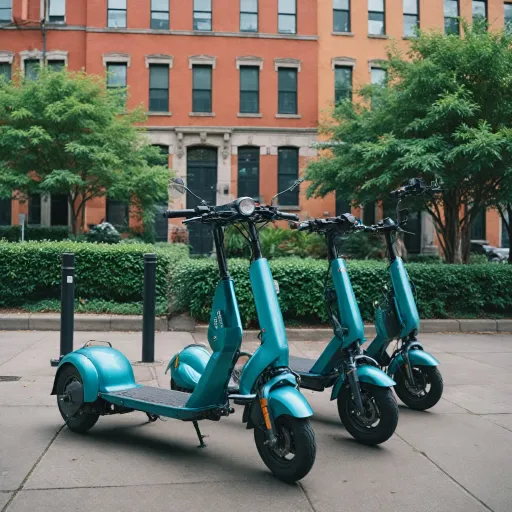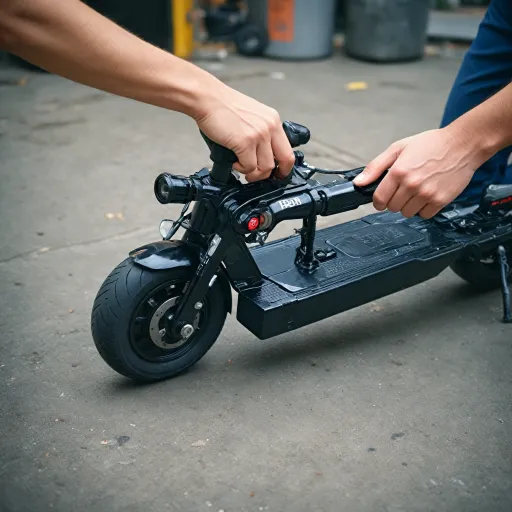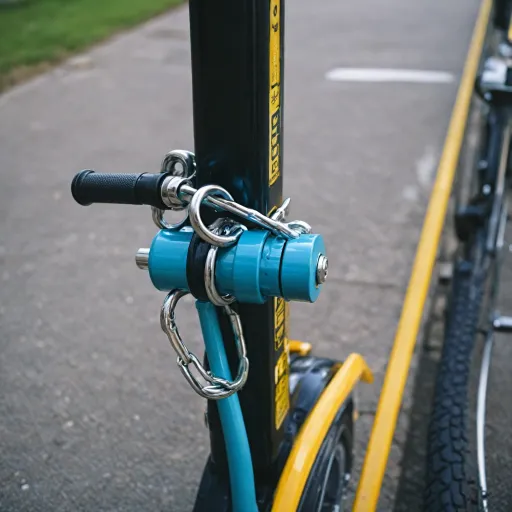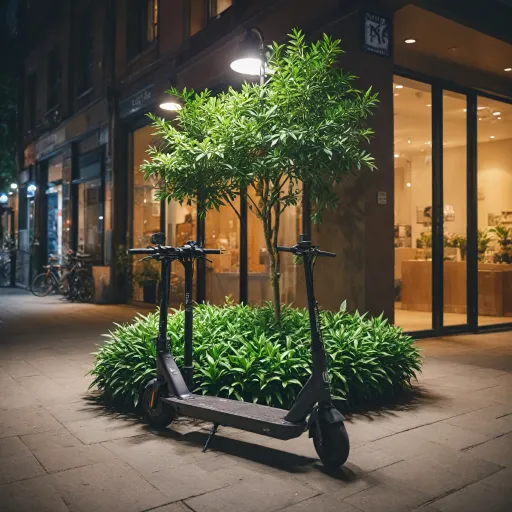
Understanding ebike charging stations and electric scooter compatibility
How ebike charging stations work with electric scooters
Many people wonder if they can use ebike charging stations for their electric scooter. The answer depends on the compatibility between your scooter's battery and the station's outlet. Ebike charging stations are designed mainly for electric bikes, but some also support electric scooters, especially in cities like NYC where public bike charging is growing.
- Charger compatibility: Most ebike charging stations use standard outlets, but always check if your scooter's charger plug matches the station. Some stations are made for specific bike batteries, while others offer a regular outlet for universal use.
- Battery voltage and level: Electric scooters and bikes often use different battery voltages. Charging your scooter at a station meant for bikes is possible if the voltage matches and your charger fits the outlet. Always monitor your battery level and avoid overcharging.
- Charging speed: Charging times can vary. Public stations may offer different power levels, affecting how long it takes to charge your scooter. Some stations are as fast as a level 2 electric car charger, while others are slower, similar to a regular outlet at home.
- Station types: You’ll find a mix of free and paid charging stations. Some are dedicated to electric bikes, while others support electric cars and scooters. Real time station availability is becoming more common in urban areas.
Before heading out for long rides, it’s a good idea to check if your scooter’s charger is compatible with public charging stations. If you want to learn more about how a portable level 2 EV charger can benefit your electric scooter, read this guide on portable level 2 EV chargers.
In the next part, we’ll look at how to find charging stations for your electric scooter in your area, and what to expect in terms of station types and availability.
How to locate ebike charging stations in your area
Finding Charging Stations for Your Electric Scooter
Locating a place to charge your electric scooter is easier than ever, especially as ebike and electric car infrastructure expands in cities like NYC and beyond. Many public bike charging stations are designed for ebikes and electric bikes, but with the right charger and adapter, you can often use these stations for your scooter too. Before heading out, check your scooter’s battery level and charger compatibility to avoid surprises.
- Online Maps and Apps: Use real time maps and apps dedicated to electric vehicle charging. Platforms like PlugShare, ChargeHub, and Google Maps let you filter by charging station type, so you can find ebike charging stations or outlets suitable for your scooter’s battery.
- Public Spaces: Many public bike racks, transit hubs, and parking garages now offer charging outlets for electric bikes and scooters. Some stations are free, while others may require payment or a membership.
- Retail and Cafés: Some stores, cafés, and coworking spaces allow customers to charge electric bikes and scooters during business hours. Always ask staff before plugging in, and bring your own charger.
- Electric Car Charging Stations: While most electric car stations use a different voltage and connector, some locations offer regular outlets or level 1 charging suitable for bike batteries. Double-check compatibility before using these stations.
For more details on the essentials of a mobility scooter charger and how it relates to your electric scooter, check out this comprehensive guide.
| Charging Location | Availability | Charger Type | Hours |
|---|---|---|---|
| Public Bike Charging Stations | Common in urban areas | Standard outlet, ebike charger | Varies, often 24/7 |
| Retail & Cafés | Selective, ask permission | Regular outlet | Business hours |
| Electric Car Charging Stations | Widespread, especially in parking lots | Level 1 outlet (sometimes) | Varies |
Always plan ahead for long rides and check if the station supports your scooter’s battery charging needs. This will help you avoid running out of power and ensure a good experience when using public charging stations for your electric scooter or ebike.
Safety tips for charging your electric scooter at public stations
How to Stay Safe While Charging Your Electric Scooter in Public
Charging your electric scooter at a public ebike charging station can be convenient, but it’s important to keep safety in mind. Not all stations are created equal, and the way you charge your battery can affect both your scooter’s lifespan and your personal safety.- Check compatibility before plugging in. Not every ebike charging station is suitable for electric scooters. Always confirm that the station’s outlet and voltage match your scooter’s charger requirements. Using the wrong charger or outlet can damage your battery or even pose a fire risk.
- Inspect the station and charger. Before you connect, look for any visible damage to the charging station, cables, or outlets. Avoid using stations with frayed wires, exposed parts, or signs of overheating.
- Monitor your battery level. Overcharging can reduce the lifespan of your battery. If your scooter or charger has an indicator, keep an eye on it and unplug once you reach a full charge. Some public stations may not automatically stop charging when your battery is full.
- Stay nearby during charging. It’s tempting to leave your scooter while it charges, but theft and vandalism are risks, especially in busy areas like NYC. Consider using a lock and following these tips to secure your electric scooter during charging.
- Be mindful of station rules and time limits. Some bike charging stations have posted hours, time limits, or fees. Respect these guidelines to avoid fines or having your scooter unplugged prematurely.
- Don’t block access for others. Public bike charging stations are often shared with electric bikes and even electric cars. Make sure your scooter doesn’t obstruct other users, and unplug promptly when you’re done.
Costs and payment methods at ebike charging stations
Understanding the Costs of Charging Your Electric Scooter
When you charge your electric scooter at a public ebike charging station, the cost can vary depending on the location, the type of station, and the level of service. In cities like NYC, you’ll find both free and paid charging stations. Some public bike charging stations are subsidized by local governments or businesses, making them free to use for a limited time or during certain hours. However, many stations—especially those offering faster charging or higher power levels—will require payment.
- Free charging stations: Often found in public parks, near bike paths, or at some shopping centers. These are great for quick top-ups during long rides, but they may have time limits or be in high demand.
- Paid charging stations: These typically charge by the hour, by the session, or by the amount of energy used (kWh). Payment methods can include credit cards, mobile apps, or RFID cards linked to a charging network.
Payment Methods and What to Expect
Most modern ebike charging stations accept a range of payment options. You might use a dedicated app to locate and pay for a charging session in real time. Some stations also accept contactless payments or prepaid cards. It’s a good idea to check the station’s website or app before you arrive, so you know what payment methods are supported and whether you need to register in advance.
| Charging Station Type | Typical Cost | Payment Methods |
|---|---|---|
| Public (Free) | $0 (may have time limits) | None required |
| Public (Paid) | $1–$3 per hour or per session | App, credit/debit card, RFID |
| Private/Commercial | Varies (often by kWh) | App, membership, card |
Other Factors That Affect Charging Costs
The total cost to charge your electric scooter also depends on your battery size and the charger’s power level. Charging a larger bike battery or using a fast charger will typically cost more than using a regular outlet or a slower station. If you’re planning long rides, factor in the number of stops and the average cost per charge. Some stations offer discounts for frequent users or off-peak hours, so it’s worth checking for deals, especially in areas with lots of electric bikes and electric cars.
Keep in mind, charging at home with a regular outlet is usually cheaper than public stations, but public charging is a good backup when you’re out and about. Always check your battery level before heading out, and plan your route to include convenient places to charge your bike battery if needed.

- + Powerful Motor: 350-2000W for varied speed
- + Impressive Range: 17-80 miles on a single charge
- + Speed Options: 19-31 mph for quick commutes
- + Folding Design: Easy to carry and store
- + Suitable for Adults: Designed for adult commuters
Planning your route with charging stops in mind
Mapping Out Charging Stops for Smooth Rides
When planning a long ride with your electric scooter, it’s smart to think ahead about where and when you’ll need to recharge. Unlike electric cars, electric scooters and bikes have smaller batteries, so their range is more limited. Here’s how you can make sure you don’t run out of power during your trip:- Check your battery level before you leave. Know how far your scooter can go on a full charge, and factor in your route’s distance.
- Use real time maps and apps to find public bike charging stations along your route. Many apps show the location, availability, and sometimes even if the stations are free or require payment.
- Plan your stops near charging stations. If you’re riding in a city like NYC, you’ll find more public bike charging options, but in suburban or rural areas, you may need to look for places with a regular outlet, like cafes or public libraries.
- Consider charging times. Most public ebike charging stations offer different levels of charging speed. Some may take a few hours to fully charge your scooter battery, so plan for breaks or meals during these stops.
- Bring your own charger. Not all stations have the right charger for every electric scooter or bike. Carrying your charger ensures you can use any compatible outlet or station you find.
Tips for Efficient Charging During Long Rides
- Monitor your battery level regularly, especially if you’re using extra features like lights or Bluetooth.
- Try to avoid letting your battery drop too low before recharging. This helps maintain battery health and reduces the risk of getting stranded.
- If you’re unsure about the availability of charging stations, call ahead or check online reviews for up-to-date info.
- For group rides, coordinate with others so everyone can charge their bikes or scooters at the same stop if possible.
What to do if you can’t find a compatible charging station
Alternative Ways to Charge When Stations Aren’t Available
Sometimes, you might find yourself in a spot where no ebike charging stations are nearby, especially during long rides or in areas with limited public bike infrastructure. Here’s what you can do if you can’t find a compatible charging station for your electric scooter:- Look for Regular Outlets: Many electric scooters and bikes can charge using a standard outlet. Cafés, libraries, and some public spaces may allow you to plug in your charger. Always ask for permission before using a public outlet.
- Carry a Portable Charger: Portable battery charging packs designed for electric bikes and scooters can be a lifesaver. These are especially useful if you’re unsure about the availability of charging stations during your trip.
- Check for Electric Car Charging Stations: Some electric car charging stations offer outlets compatible with ebike or scooter chargers. However, not all will fit your charger, and you may need an adapter. Always check the voltage and connector type to avoid damaging your battery.
- Ask Local Bike Shops: Bike shops, especially in urban areas like NYC, often have charging facilities for electric bikes and scooters. They might let you charge your battery for a small fee or during business hours.
- Plan Ahead for Battery Level: Before heading out, estimate how long your battery will last and plan your route accordingly. Keeping an eye on your battery level in real time can help you avoid running out of power far from a charging station or outlet.


